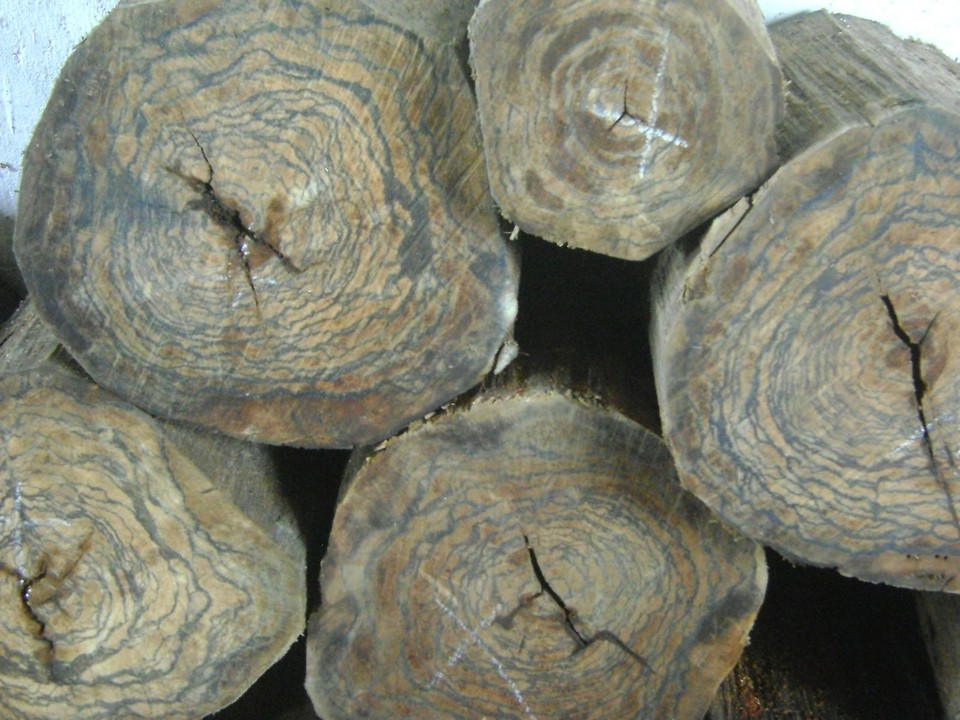
Gonystylus buaya / "Zebra"
The most important genus, Aquilaria spp. are typical of understorey species (Figure 2).
Aquilaria malaccensis, A. beccariana, A. crassna, A. filaria, A. hirta, A. Microcarpa are of six Aquilaria species native to Indonesia (Ding Hou, 1960 in Suhartono and Newton, 2001). These six species are primarily found in lowland and upland Sumatra, Kalimantan, Maluku and Irian Jaya (Suhartono and Newton, 2001).
ANALYSIS AND INTERPRETATION OF THE DATA AND RESULTS
From the review results from various available literatures, it could be inferred that
Indonesia signifies as one of the important gaharu-producing countries in the world,
which owns more than 26 species widely scattered in Indonesia. The diversity of gaharu-
yielding trees is quite high, and their population is distributed in Sumatera, Kalimantan,
Sulawesi, Nusa Tenggara, Maluku, Papua, where they grow naturally. Abundant number
of gaharu tree species are related to the varying qualities of the yielded gaharu, and
consequently the gaharu consumers owe their different tests to such qualities. Variation
in genetics and growth locations of gaharu trees present one of the determining factors
of different gaharu-qualities. Another consideration is that the gaharu-developing fungi
also take the role in affecting the qualities of developed-gaharu. Despite that, natural-
gaharu products tended to decrease continuously all through the years either qualitatively
or quantitatively due to the unsustainable gaharu-harvest.
5
CONCLUSIONS
Referring to the review results from several literatures about the available gaharu
trees, it can be inferred that Indonesia signifies as a country that exhibits the highest
diversity in gaharu-yielding trees throughout the world, in that it owns more than 26
species, which are widely scattered from Aceh until Papua Province. The gaharu-
yielding trees that grow naturally still exist in Indonesia, but unfortunately in number
they tended to become limited, thereby causing difficulties in their inventory work. The
natural gaharu trees that are still left can be converted to the seed-developing trees
by the community staying around the forest. Meanwhile, the gaharu-yielding trees as
already planted by the community around the forest, grow at more than 40 regencies,
which in number reached more than two million gaharu-yielding trees planted at the
farmer-owned land areas. These area data still do not cover those regarding the gaharu-
tree area owned by the gaharu-exporter enterprisers who are each obligated to plant
2-ha area of gaharu trees.
From the survey and identification results on the gaharu-yielding trees that grow in
Indonesia either those from the nature or the plantation, there were found 8 tree species
that develop gaharu favorably and affording the potency to be further developed, which
comprise
Aquilaria malaccensis,
A. microcarpa,
A. beccariana,
A. hirta,
Aquilaria acuminata IN KALIMANTAN AND SUMATRA,
Aquilaria cumingiana IN KALIMANTAN AND SUMATRA,
A. filaria,
A. crassna ( NEW since 2003, seedlings imported from Vietnam), and
Gyrinops versteegtii
These species can be cultivated by the
stakeholders, and their gaharu products can be increase through the induction process.
Gaharu buaya (Gonystylus and Aetoxylon sympetalum) or “Zebra” Aquilaria
is generally considered to produce the ‘true’ gaharu, with other genera thought to produce
inferior types. In particular, the designation ‘gaharu buaya’ (or ‘crocodile gaharu’) is sometimes used to distinguish the product of genera such as Gonystylus and Aetoxylon. In Sarawak, A. Sympetalum is noted as being “locally frequent in Kerangas in West Sarawak”, while in comparison Aquilaria species are said to be rare (Anderson, 1980). Given this predominance, Aetoxylon sympetalum could be the main source of gaharu in Sarawak. Indeed, the Forest Department’s checklist of the trees of Sarawak (Anderson, 1980) states that A. Sympetalum produces the “true gaharu wood”. An authoritative note on an Aetoxylon herbarium specimen sheet labelled ‘ gaharu buaya ’ states that: “This species is the principal producer of gaharu - the incense wood exported to India” (Anderson, 1959). Browne (1955) notes that gaharu buaya, when burned, “has a pleasant aromatic smell, lacking, however, the suggestion of lemon given by true aloes-wood ( gaharu mengkaras ).
Gaharu buaya is probably exported from Sarawak in larger quantities than any other incense wood, mainly to Singapore.